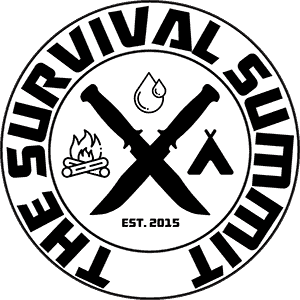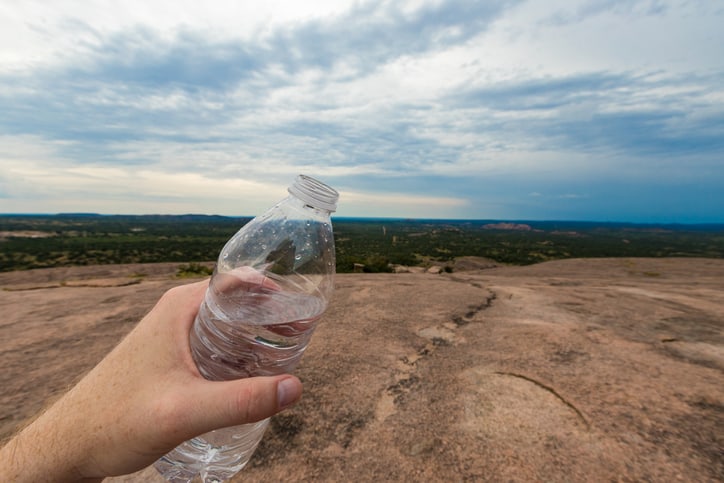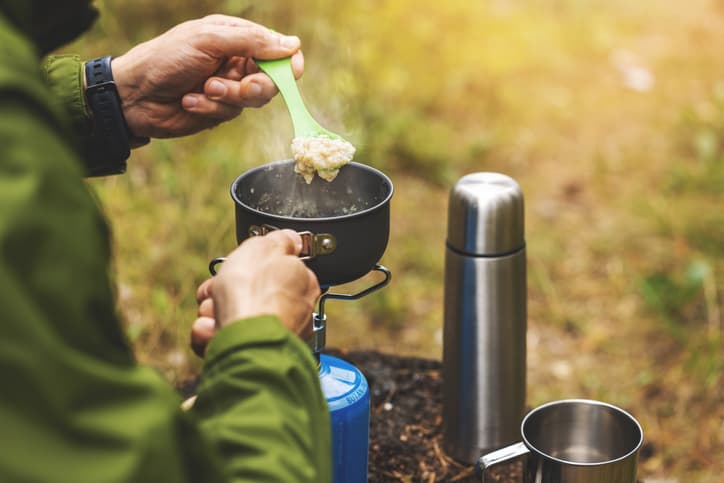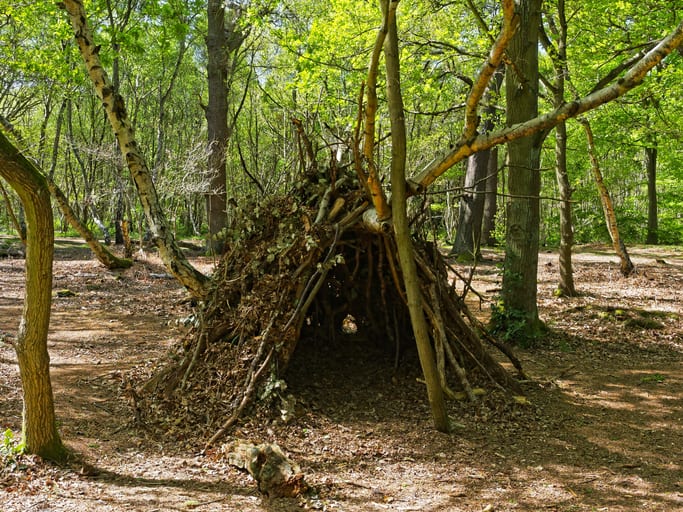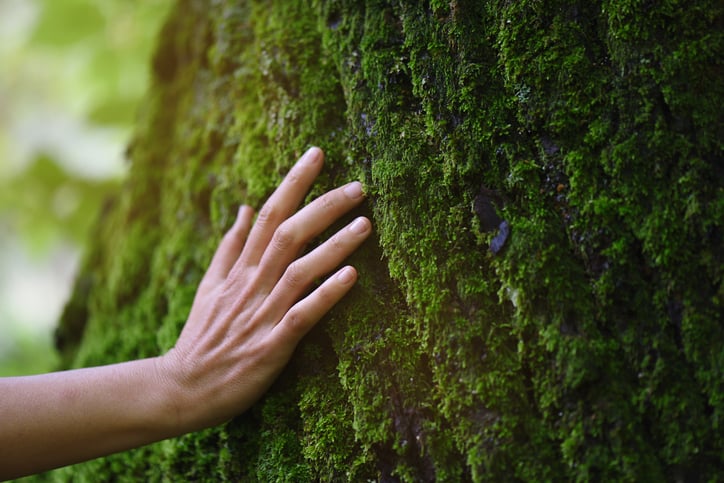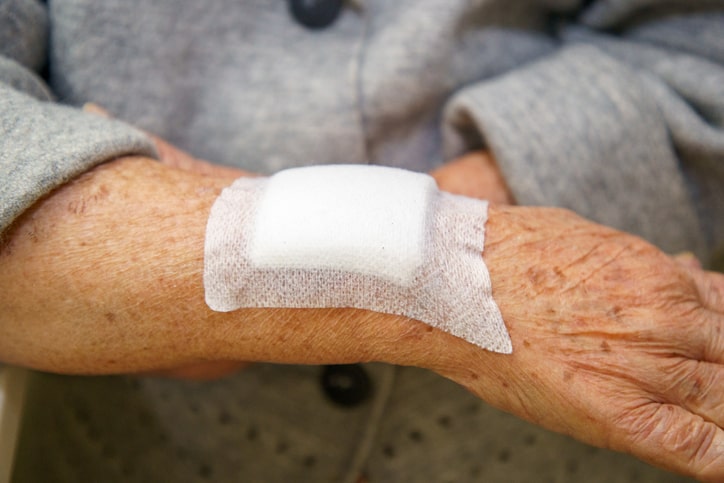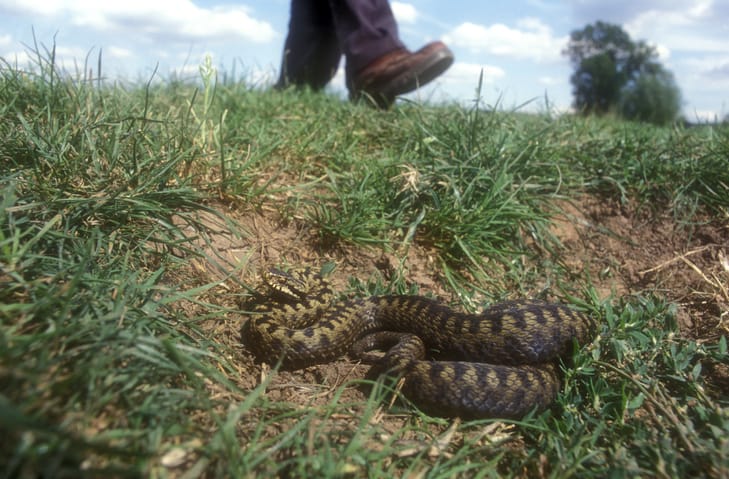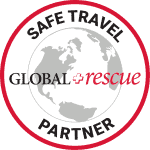Debunking Survival Myths: Separating Fact from Fiction in Outdoor Emergencies
This article explores common survival myths perpetuated by online videos, TV shows, and social media, debunks misconceptions about survival techniques like rationing water, not needing to eat food for three weeks, wound treatment, how to move someone with a severe injury, running from bears, moss’s growth direction and snake bite treatment, and emphasizes the importance of accurate survival knowledge.
Common Survival Myths Debunked
Water Rationing
Survival myths, like people should ration water in a survival situation, are a topic of significant debate and misunderstanding. Common wisdom might suggest that careful rationing is the best approach to ensuring longevity despite limited resources. However, when it comes to water—a critical element for survival—conventional rationing advice may not be the most beneficial strategy.
Water is essential for the human body to function correctly. It is involved in nearly every bodily process, including temperature regulation, waste removal, and the transport of nutrients. Dehydration can quickly impair cognitive and physical abilities, reducing a person’s capacity to make sound decisions or perform necessary survival tasks. Symptoms of dehydration include dizziness, confusion, fatigue, and, in severe cases, organ failure and death.
The rationale behind the myth of water rationing is that it’s better to have a small amount of water consistently over time than to consume what little you have and run out quickly. This strategy, however, ignores the body’s immediate needs. Drinking water when you’re thirsty rather than strictly rationing it can help maintain physical and cognitive function for as long as possible. This is crucial in survival, where finding more water should be a priority.
Experts in survival and wilderness medicine argue that the best approach is to drink when thirsty and focus on finding more water as a primary task. This method ensures that the body remains hydrated for optimal functioning while the search for additional water sources continues. Additionally, modern survival training often emphasizes securing water from various sources, highlighting techniques such as collecting dew and rainwater or creating solar stills.
While rationing limited resources is a sound principle in many survival situations, the traditional wisdom of rationing does not apply to water consumption. Staying hydrated is paramount for survival, and the focus should be on maintaining hydration levels to support physical and mental capabilities while seeking additional water sources. This approach not only maximizes the chances of survival but also underscores the importance of practical survival skills and knowledge in emergencies.
You can Survive Three to Four Weeks without Food
The adage “A person can survive three weeks without food” is a commonly cited survival myth that oversimplifies the complexities of human resilience and physical exertion. While it’s true that in optimal conditions, some individuals have survived without food for up to three weeks or even longer, this generalization does not account for the variable survival factors, including activity level, health status, environmental conditions, and access to water.
Physical exertion significantly alters the equation. The body requires considerable energy to perform basic survival tasks, such as building shelter, gathering water, or seeking help. These activities become exponentially more challenging without the caloric intake needed to fuel the body. Muscles begin to weaken, cognitive functions decline, and the body starts consuming its tissues for energy, starting with fat reserves followed by muscle.
Moreover, the absence of food intake impacts the body’s ability to regulate temperature, heal from injuries, and fight off infections. A weakened physical state diminishes the chances of successfully navigating survival situations, making finding food, water, or rescue more difficult.
Therefore, while the notion that one can survive three weeks without food might hold a kernel of truth, it disregards the critical impact of physical exertion and environmental stresses on the body’s survival mechanisms. Maintaining energy levels through food intake is crucial for survival, especially when physical demands are high. Survival experts emphasize prioritizing efforts to secure food and water to sustain physical and mental capabilities in challenging scenarios. This nuanced understanding is vital for anyone preparing for or finding themselves in a survival situation.
Shelter and Fire Starting Myths
Selecting an appropriate shelter in survival scenarios is paramount for safeguarding against harsh weather conditions and preserving core body temperature. While the construction of lean-tos is frequently depicted in survival media as a straightforward and efficient means of shelter, the reality is that their effectiveness can significantly vary across different environmental settings.
It’s critical to consider a myriad of factors, including the prevailing wind direction, the availability and type of insulation materials, and the level of ground moisture, to construct a shelter that offers optimal protection and thermal comfort. Moreover, the shelter’s orientation relative to the wind and the incorporation of insulating materials like leaves, grass, or even snow can dramatically enhance its ability to retain heat and ward off the cold.
When it comes to fire starting, the notion that any dry piece of wood is suitable for generating fire through friction is a misconception corrected by those well-versed in survival techniques. Woods differ markedly in their hardness, resin content, and how readily they can be ignited through friction.
For example, softwoods, which generally have a higher resin content, catch fire more easily and are preferable for friction fire starting compared to hardwoods, which may require more effort and a precise ignition technique.
A profound understanding of the specific properties of various types of wood and their combustion characteristics is crucial. Recognizing that not all woods are equally efficient for fire-starting purposes can significantly enhance the likelihood of success in creating a fire under survival conditions. This knowledge enables individuals to select the most suitable materials, increasing their chances of surviving and thriving in wilderness situations.
The key to mastering survival skills, such as shelter building or fire starting, extends beyond merely watching instructional videos. It’s crucial to actively practice these techniques in the field as frequently as possible. Engaging in hands-on practice serves multiple purposes: it allows you to validate the effectiveness of your equipment under adverse conditions and confirms your proficiency in applying the learned methods.
By regularly testing your skills and gear in various settings, you reinforce your knowledge and ensure you’re well-prepared to utilize these techniques effectively when the need arises. This approach guarantees that when faced with real-life survival situations, you have the confidence and, more importantly, the competence to handle the challenges efficiently.
Eating Raw Meat and Pathogen Risk
Consuming raw meat and seafood for survival poses significant health risks due to potential bacterial contamination and parasite transmission. While the idea of consuming raw animal products for sustenance is prevalent in survival myths and popular culture, it is essential to recognize the dangers associated with such practices. Raw meat and seafood may harbor pathogens that can cause severe gastrointestinal illnesses and infections, compromising an individual’s health and survival prospects.
An example of the pathogen risk associated with eating raw meat is the prevalence of foodborne illnesses caused by undercooked or contaminated animal products. The temptation to consume raw meat may arise in survival situations with limited food resources.
However, the potential consequences of ingesting harmful bacteria or parasites outweigh the immediate hunger relief. Individuals can avoid unnecessary health complications and maintain their well-being in challenging environments by prioritizing food safety and proper cooking methods.
Moss only grows on the North side of Trees
Scientific studies have effectively challenged the longstanding myth that moss exclusively grows on the north side of trees, a misconception once commonly recommended for wilderness navigation. As revealed through ecological and botanical research, the reality is that moss growth is not strictly limited to the northern side of trees but is instead influenced by a complex interplay of environmental factors. These include moisture availability, the intensity and duration of sunlight exposure, and the surface texture on which the moss grows.
Research published in ecological journals indicates that while moss does prefer shaded, moist environments—which can sometimes more frequently occur on the north side of trees in certain hemispheres—this is not a reliable universal rule. In dense forests or areas with variable topography, moss can thrive on any side of a tree where conditions are damp and shaded enough to support its growth. This variability makes moss an unreliable indicator for directional navigation.
Understanding the ecological nuances influencing moss growth underscores the importance of utilizing dependable navigation tools when exploring outdoor environments. Modern navigation methods, such as compasses and GPS devices, offer precise and reliable guidance not subject to the conditions affecting moss growth. The reliance on scientifically backed navigation tools is essential for ensuring safety and preventing disorientation in wilderness settings.
By acknowledging the limitations of natural navigation cues like moss growth, individuals can make informed decisions about the best tools and methods for orientation in natural landscapes. This is one of the most common survival myths about land navigation.
Wound Cleaning
The belief in the superiority of alcohol or hydrogen peroxide for wound disinfection is a widespread survival myth debunked by scientific and medical research. Studies have shown that for most minor injuries, simply using clean water for wound cleaning effectively minimizes infection risk.
The harsh nature of substances like alcohol and hydrogen peroxide can be detrimental, causing damage to the healthy tissue surrounding the wound, which in turn can impede the healing process.
Medical professionals advocate for a gentler approach to wound care. According to guidelines from healthcare authorities, clean, running water and mild soap are recommended to clean cuts and abrasions. This method helps remove debris and bacteria without the adverse effects of more caustic cleaning agents.
Further research supports that maintaining a moist wound environment, rather than using drying agents like alcohol, promotes faster and more effective healing. Moisture helps migrate epithelial cells and reduces the risk of scab formation, slowing down the healing process. Additionally, evidence from wound care studies indicates that applying a sterile dressing after gentle cleaning provides a protective barrier that aids in maintaining optimal conditions for healing.
In conclusion, the medical consensus is clear: using clean water and gentle cleaning practices for wound care is sufficient and preferred. This approach aligns with the body’s natural healing processes, supporting quicker recovery and reducing the likelihood of infection. As such, revisiting first aid protocols to emphasize these evidence-based practices is crucial for promoting optimal wound healing outcomes.
Spinal Cord Injury Movements
Detailing the importance of proper movement in suspected spinal cord injury cases is crucial to prevent further damage to the affected individual. Common myths associated with spinal cord injuries, such as the belief that moving a person with a suspected injury can worsen their condition, have been debunked through medical research. In reality, proper stabilization and movement techniques can prevent complications and improve outcomes for individuals with spinal cord injuries.
One specific example of a debunked myth related to spinal cord injuries is the misconception that immobilizing the entire body of a person with a suspected injury is necessary. Research suggests that immobilizing only the head and neck while allowing controlled movement of the rest of the body can be more beneficial in certain situations. By understanding the appropriate protocols for spinal cord injury management, individuals can provide better assistance to those in need and potentially prevent further harm.
Snake Bite Treatment
Medical experts have thoroughly discredited the once-common survival myth that’s the advice of employing the cut-and-suck method to treat snake bites. This method, which involves making an incision over the bite and attempting to suck out the venom, is not only ineffective at removing a substantial amount of venom but also poses serious risks, including infection and further tissue damage.
The scientifically supported response to a snake bite is to keep the bitten limb immobilized and positioned lower than the heart and to seek immediate medical attention. This approach minimizes venom spread and allows for professional assessment and intervention, which are key to managing the bite effectively.
The belief that one treatment fits all types of snake venom is another dangerous oversimplification. Snakes produce various venoms, each with distinct components and effects. Some venoms are primarily neurotoxic, affecting the nervous system, while others cause significant tissue damage or coagulopathy (affecting the blood’s ability to clot).
Immediate medical care becomes imperative, and identifying the snake species, if possible, can be invaluable in administering the correct antivenom and treatment protocols. Accurate identification helps healthcare providers tailor the treatment to combat the specific effects of the venom involved.
Dispelling myths about snake bite treatment and embracing practices grounded in medical science are critical for enhancing survival rates and outcomes after snake bites. Education and awareness about the correct first aid measures and the importance of rapid, professional medical treatment can significantly mitigate the consequences of snake bites, underscoring the need for widespread public health messaging.
Bear Attack Response
During bear encounters, understanding the recommended strategies for handling such situations is essential for personal safety. Common survival myths surrounding bear behavior, such as the belief that playing dead is the best defense mechanism, have been refuted by research and wildlife experts. In reality, playing dead may be effective for certain bear species, like grizzlies, but can provoke aggressive behavior in others, like black bears. Knowing how to differentiate between bear species and respond accordingly can significantly reduce the risk of injury during bear encounters.
A specific example that highlights the risks of playing dead during a bear attack is the case of an individual encountering a black bear in the wild. While playing dead might deter grizzly bears from further aggression, it can trigger predatory instincts in black bears, leading to potential harm.
In such situations, making oneself appear larger, making loud noises, and slowly backing away may be more effective strategies to deter black bears. Individuals can make informed decisions in bear encounter scenarios by understanding the nuances of bear behavior and dispelling common myths.
Understanding the potential hazards of any location where you reside, labor, embark on hiking adventures, or set up camp is crucial for ensuring personal safety and preparedness. Before venturing outdoors, it’s wise to research the specific area you intend to explore thoroughly. This research should encompass the natural wildlife and terrain, weather patterns, known environmental risks, and advice from local authorities or experienced outdoor enthusiasts.
Conclusion: Importance of Accurate Survival Knowledge
Dispelling survival myths and mastering genuine survival techniques are crucial for safeguarding one’s safety and health during outdoor emergencies. Recognizing the truths amidst widespread fallacies and misinformation allows individuals to make knowledgeable choices and execute suitable measures when faced with actual survival situations.
It is vital to highlight the significance of dependable information sources and hands-on experience in survival tactics. Such knowledge and training equip individuals with the tools to address and surmount obstacles encountered in wild settings.
People can enhance their resilience and capability to succeed in challenging environments by prioritizing accurate education and practical skill development. This approach fosters a robust understanding of survival strategies, ensuring individuals are prepared to manage emergencies and sustain themselves in nature efficiently.
